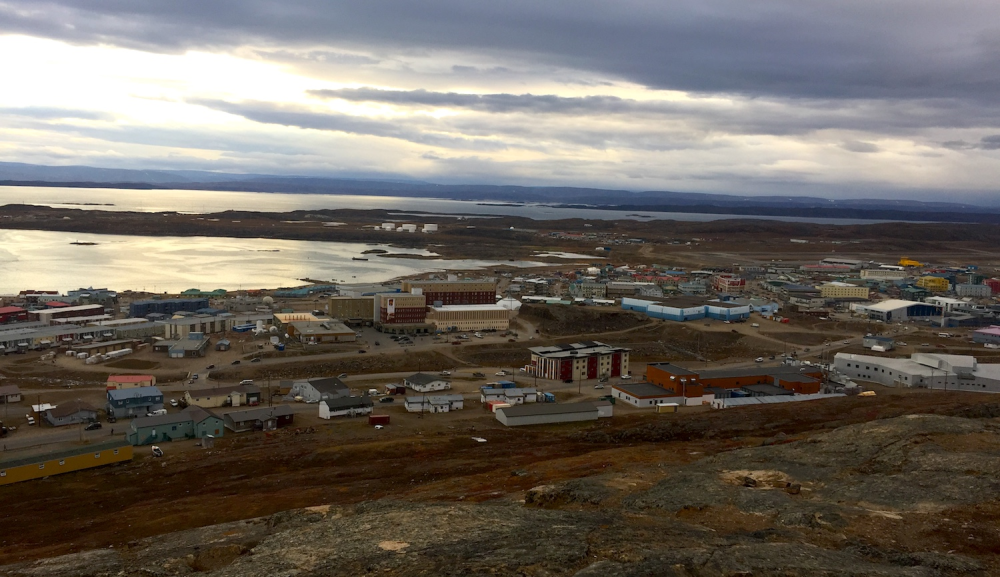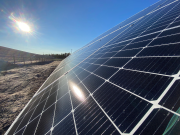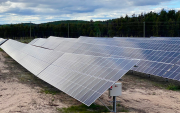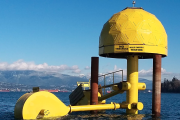This is the first publication in Remote Communities Energy in Transition, a series about challenges, opportunities, and solutions in integrating renewable energy into remote communities’ microgrids. These publications cover the advancements in technical, financial, and human capacity, energy policy, and regulations needed to transition remote communities to clean energy. For more publications, visit our Renewables in Remote Communities website.
The 250 or so remote communities scattered across the country are collectively home to about 185,000 people. They are mostly located in B.C., northern Ontario, northern Quebec (Nunavik), northern Labrador (Nunatsiavut), Yukon, the Northwest Territories, and Nunavut. Remote, in this case, refers to the fact they are not connected to North America’s integrated electricity grid or natural gas infrastructure. While some communities are accessible by permanent road, others are only accessible by airplane, boat, or winter road.
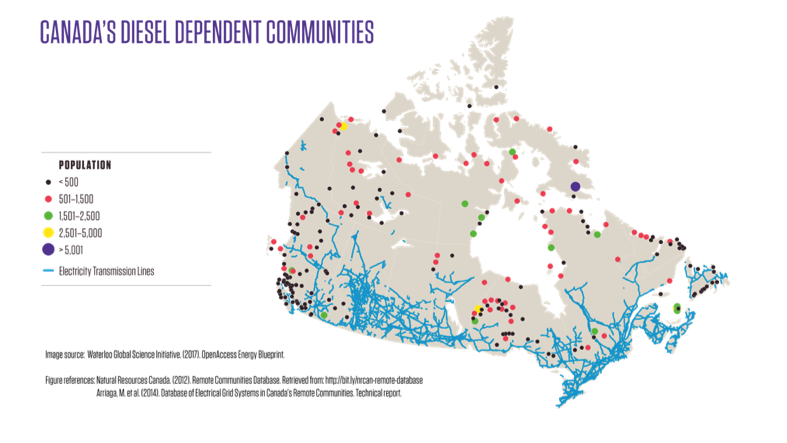
Dependence on diesel
Most Canadian households are connected to the electricity grid, and the electricity they consume is generated from multiple sources — hydro, natural gas, coal, wind, solar, and nuclear — with hydropower being the main source. In contrast, remote communities are cut off from the national electricity grid and must produce electricity locally. According to Natural Resources Canada’s Remote Communities Energy Database, the large majority of remote communities, 70 per cent, rely on inefficient diesel generators to produce electricity, while 13 per cent rely on hydro, and 17 per cent use a combination of other fossil fuels. Remote communities also use fossil fuels for space and water heating, with diesel providing for the vast majority of heating needs.
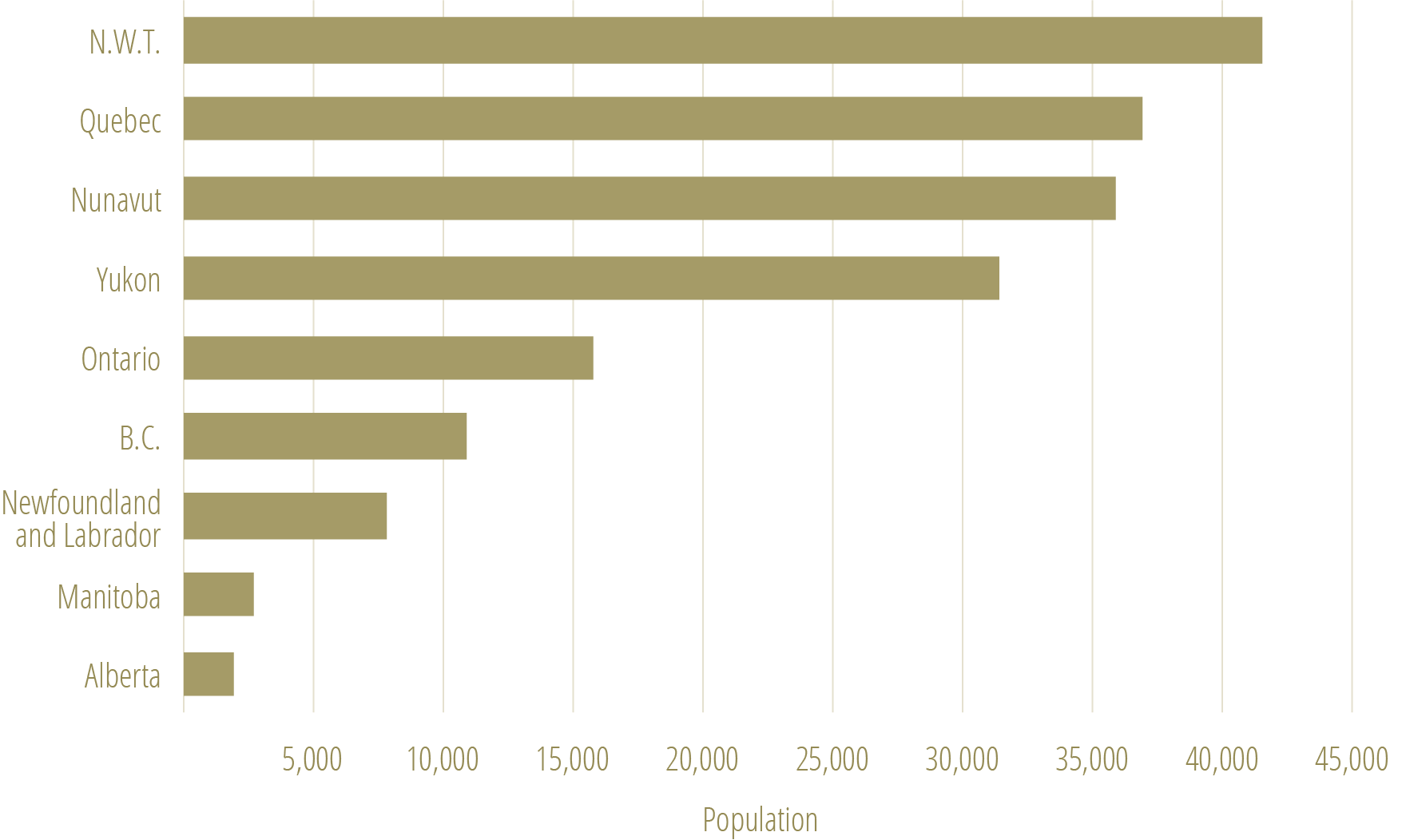
Based on the best available data, remote communities in Canada collectively consume more than 90 million litres of diesel fuel every year for electricity generation. That’s equivalent to 36 Olympic-size swimming pools of diesel being transported, stored, and burned. Nunavut, Ontario, and the Northwest Territories consume the largest amounts. A lack of data makes it more difficult to quantify how much diesel is used for heating, but it’s estimated at two to three times more than the amount used for electricity. In remote communities, energy consumption is much higher than the Canadian average due to poor building energy efficiency and cold climates.
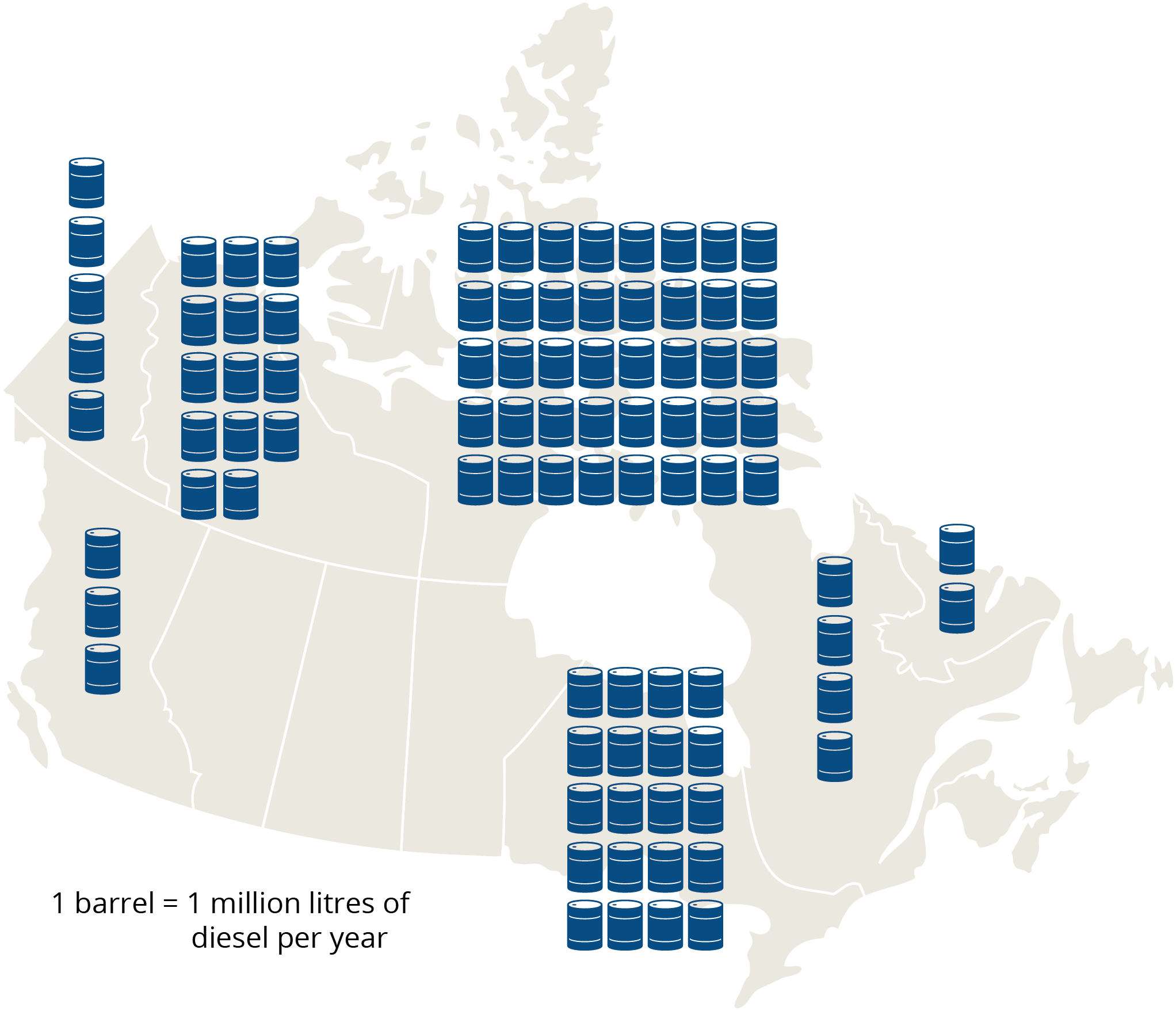
Renewing the microgrid
Since remote communities are not connected to the North American electricity grid, they make use of their own small-scale microgrids. A microgrid encompasses the whole system that provides electricity to the community; this includes diesel generators, distribution wires, and control systems, plus any sources of renewable energy, such as wind, solar (photovoltaic), biomass combined heat and power, and small-scale hydro.
As renewable energy is added to a microgrid, operating the system sometimes becomes more complicated, but the marginal cost of producing electricity usually decreases. This is because electricity produced from renewables displaces that from diesel. To put it another way, using free energy from the sun, wind, and earth results in less diesel fuel being purchased and burned. Depending on the situation, running diesel generators less frequently may also decrease the cost of operating and maintaining them. In many cases, renewable energy has the potential to provide for the majority of a community’s energy needs, but diesel generators may still be needed as backup. (For a more in-depth look at remote microgrids, see the third publication in this series.)
High price to pay
Relying on diesel fuel is expensive — especially in remote communities where everything already costs more, from housing and travel to food and services. The average home in a representative northern Ontario community consumes the equivalent of 40 barrels (each containing 159 litres) of diesel each year for heat and electricity. This translates to an energy bill of over $3,000 per year — more than twice that of the average Canadian household. Another Yukon community pays even more, with households averaging $4,500 per year. It is difficult to paint a broad picture of energy costs for all remote communities in Canada — mostly because of the differences in climate (e.g. B.C.’s mild coast versus Nunavut’s high Arctic), but generally, energy costs are very high.
High energy costs are typically addressed through government programs that subsidize and equalize electricity rates and provide discounts for heating fuels. The unique geographical and logistical constraints of remote communities (i.e. how difficult it is to bring in fuel and supplies) also have a major impact on energy prices. The following table illustrates the high cost of diesel fuel in a few representative communities, and shows how remoteness and access affect costs.
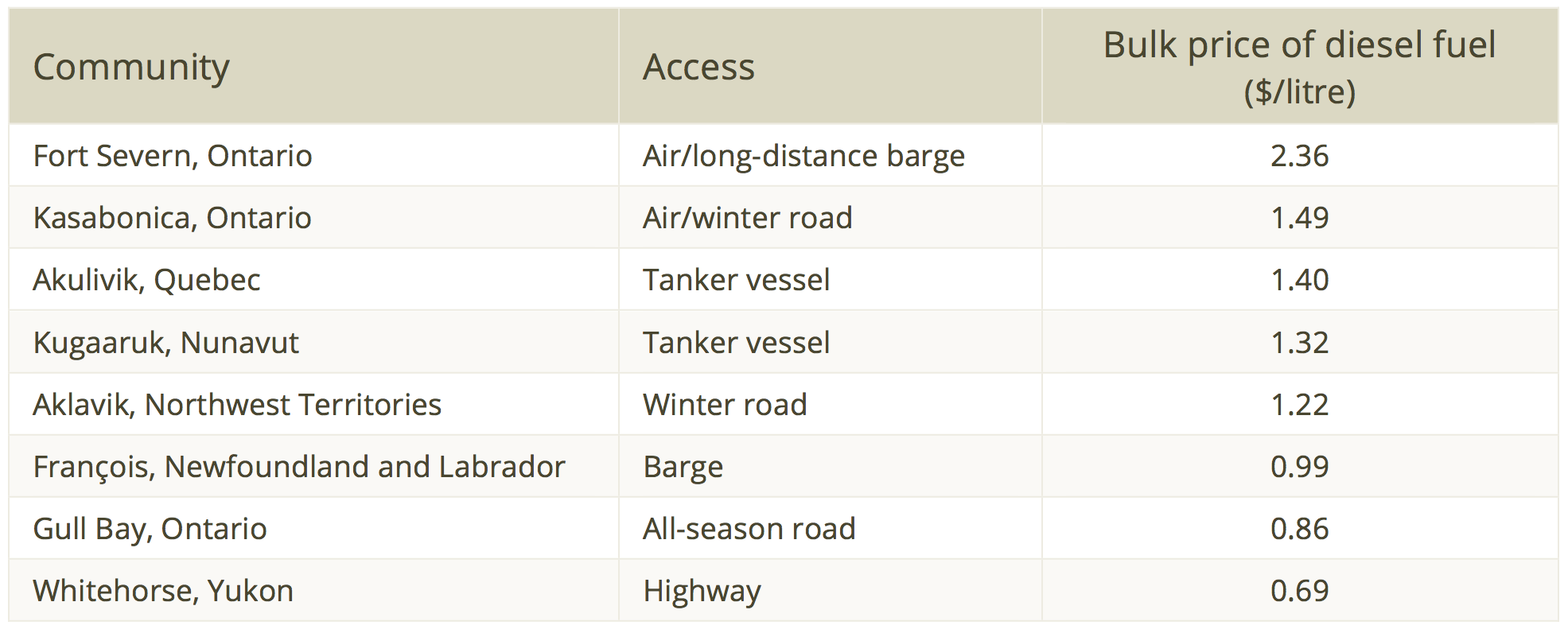
Regardless of location, solely relying on diesel in remote communities means higher costs and complete dependency on a fuel that must be transported from far away. Incorporating renewable energy into a community’s microgrid can reduce that dependency — leading to lower costs for residents and a more secure, local supply of energy.
This article appeared in National Newswatch on January 16, 2019.
Remote Communities Energy in Transition
Publications in this series:
- Diesel, renewables, and the future of Canada’s remote communities
- The True Cost of Energy in Remote Communities
- Remote communities meet renewable energy solutions
- The future of the electric utility in Canada’s remote communities
- Rebuilding Canada’s economy includes energy resiliency in remote communities
- How B.C. can be a leader in economic reconciliation
- Tracking diesel reduction progress in remote communities

